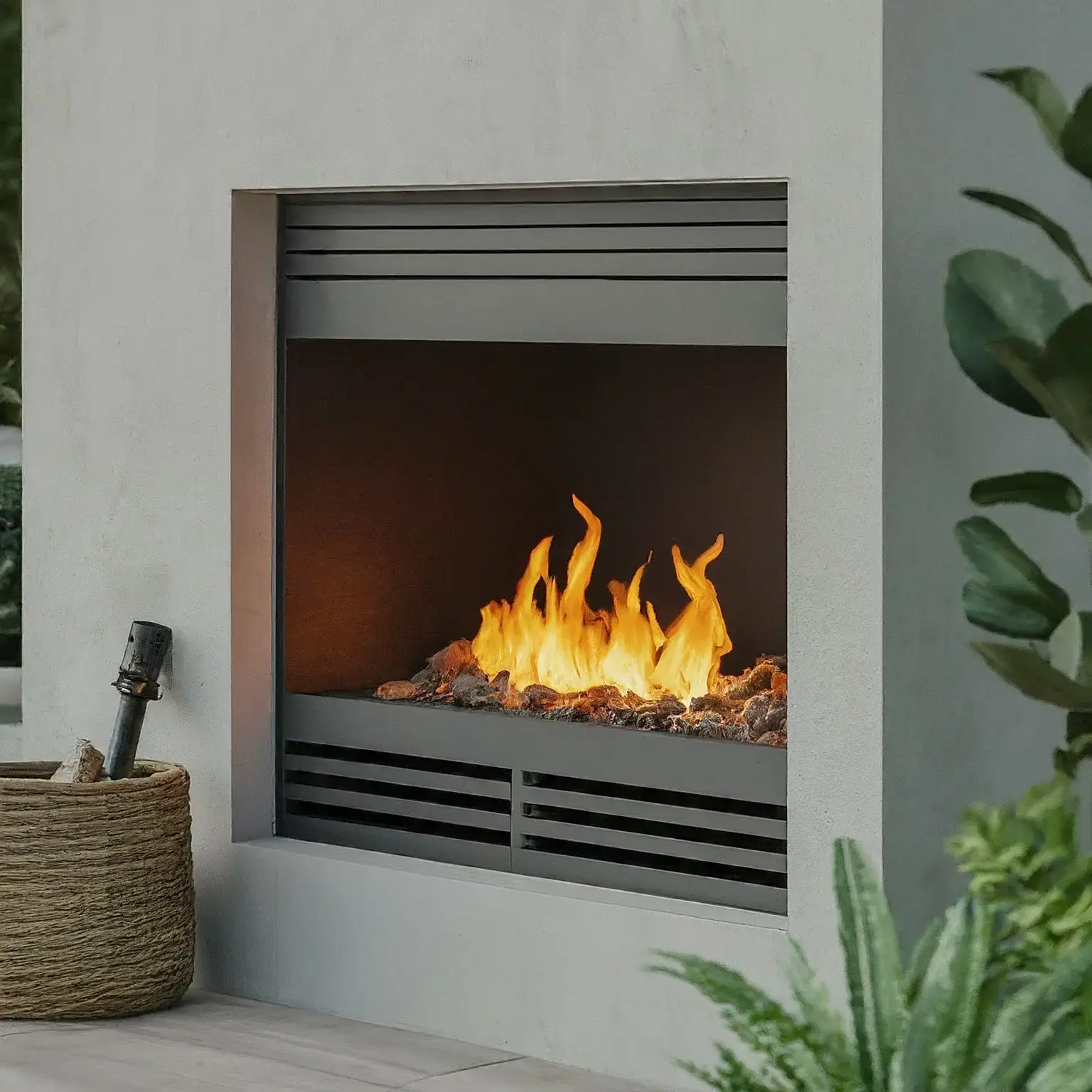When it comes to outdoor fireplaces, the question often arises: Do they require a damper? Unlike indoor fireplaces, outdoor ones don’t necessitate a damper.

While dampers play a crucial role in sealing off chimneys to keep cold air out for indoor setups, this isn’t a concern for outdoor fireplaces, as they are already exposed to the elements.
Benefits of a Damper for Outdoor Fireplaces:
While not a requirement, a damper can offer some advantages for your outdoor fireplace:
Heat Projection: By strategically adjusting the damper, you can direct the heat towards your desired area, enhancing your comfort.
Protection from Rain: A damper acts as a barrier, preventing rain from washing ashes onto your patio or yard.
Related: protection from rain
Enhanced Coziness: With a partially open damper, more warmth is retained around the fireplace, creating a cozier atmosphere for you to enjoy.
In indoor settings, dampers are standard features, ensuring that your home remains sealed from external elements. However, for outdoor fireplaces, the need for a damper is minimal, as both the fireplace and chimney are already exposed to the outside environment.
While not mandatory, the inclusion of a damper in your outdoor fireplace can offer added convenience and protection. Consider your specific needs and preferences when deciding whether to incorporate one into your outdoor fireplace setup.
Understanding Dampers: Essential for Indoor Fireplaces, Optional for Outdoors
If your indoor fireplace lacks a damper, it’s imperative to have one installed promptly. Without a damper, your chimney essentially becomes an open entryway to the elements. Rain, snow, and wind can freely enter your living space, potentially causing damage.
On the other hand, for outdoor fireplaces, the need for a damper is not compulsory. Unlike indoor setups, outdoor fireplaces can operate effectively without one.
While there are some benefits to having a damper, such as redirecting heat and preventing ash spills, it’s not a critical component for outdoor enjoyment.
Rest assured, if your outdoor fireplace doesn’t have a damper, there’s no immediate cause for concern. While it’s recommended to consider the advantages, it’s not a mandatory addition.
Understanding Dampers: Legal Requirements and Practical Considerations
While state regulations may differ, fireplaces are generally not mandated to have a damper. However, they come highly recommended, particularly for indoor fireplaces, serving as a crucial barrier between interior and exterior air.
The absence of a damper is neither mandatory nor illegal. When it comes to outdoor fireplaces, the decision is yours to make. If your fireplace is a recent installation, it likely already includes a damper. However, if it doesn’t, you have the option to have one installed, though this may incur installation costs.
We briefly touched on the advantages of having a damper, and in truth, there are very few downsides (outside of the initial installation expense). It’s worth noting, however, that you must ensure the damper is open when lighting a fire.
If it remains closed, smoke and fumes will have no exit, potentially dispersing into your seating area. While this might be an inconvenience outdoors, it can become a significant issue indoors.

Damper Installation Costs: A Comprehensive Guide
The cost of installing a damper typically ranges between $450 and $600, encompassing both the damper itself and associated labor expenses. Here’s a breakdown to provide you with a clear understanding:
Damper Cost: The damper’s price varies depending on the type and material chosen. On average, you can expect to spend between $150 and $300.
Labor Costs: Professional installation services generally amount to around $300, contributing to the total installation expense.
In comparison to the installation of an entire fireplace, incorporating a damper is a relatively cost-effective addition. Labor expenses remain relatively consistent, averaging at approximately $300. The type of damper and the material used will influence the overall cost. There are two main types of dampers:
Chimney Caps: Positioned at the top, chimney caps typically cost around $250.
Related: Wind-resistant chimney cap
Throat Dampers: Located at the bottom, throat dampers are priced at approximately $200.
While some homeowners may choose to undertake the installation themselves to bypass labor costs, it’s important to note that this may involve accessing the roof, which may not be suitable for everyone.
Additionally, meticulous care is required during the installation process. A malfunctioning damper could lead to potentially dangerous situations, such as smoke and fumes being directed into your living area. For peace of mind and safety, professional installation is often recommended.


